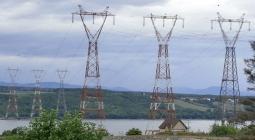The net-zero trap: When everyone is left behind
I am going to go out on a limb with this one, but I think it’s worth it. Let’s begin by taking a step back and talk about the limit of limits, the first of the Ten Climate Commandments: “Thou shall not exceed 1.5°C global mean temperature.”
So catchy!
However, if you read the relevant paragraph of the historic COP21 Paris Agreement decision, it refers to…. 2.0°C.
Its overarching goal is to hold “the increase in the global average temperature to well below 2.0°C above pre-industrial levels” and pursue efforts “to limit the temperature increase to 1.5°C above pre-industrial levelsi.
In my opinion we started with the wrong foot from the very beginning. We were given an easy to identify with target, but another one hidden behind it: “…well below 2.0°C …”
Just what does well below mean anyway?
Can anyone define numerically “well below”? Of course not! So it was open to interpretation and fossil fuel companies took full advantage of this and with the assistance of thousands of lobbyists kept derailing COP and other summits discussions and decisions.
Let me just give you one example: the first time that “fossil fuels” were included in a COP decision was at COP26ii, in Glasgow and the first time they were named as the cause of climate change was at COP28iii.
It took 5 and 7 COPs, respectively, after the historic COP21, to say things as they are. Until then, officially, CO2 was……self emitted.
The definition of hypocrisy? The definition of the power of the fossil fuel lobby? Or the definition of the powerlessness of civil and scientific world? Take your pick.
This gave birth to the ingenious, brilliant question: “How many COPs does it take to arrest climate change?”
Climate change and setting limits
We must also admit that setting a limit was an open provocation to break itiv. Some people treated it with defiance, just as they treat speed limits or alcohol limits. Others with the certainty that limits always have a safety margin, so it’s safe to pass it. And others, as explained above, just were powerful enough to totally ignore it.
So much for 1.5°C which for all intents and purposes is considered dead and awaiting burialv vi.
Officially of course we will have to wait for 1.5°C limit to be breached for a number of years before it is pronounced dead by scientists. But in their heart of hearts they are mourning alreadyvii.
Hence the discussion now centers on “overshoot”viii, which refers to a period when global average temperatures temporarily (?) exceed (?) the 1.5°C threshold above pre-industrial levels, before returning below it through (?) ….
The three (3) question marks in the above paragraph are intended to show the grey areas of such hypotheses. I searched for an estimation of “temporarily” and the best numerical estimate I got is “some decades”, while for “overshoot” in terms of degrees Celsius, there were no results. Finally the greyest of all areas is the means by which we will return to below 1.5°C, with Fossil Fuel Lobby favorite, carbon removals, ranking high.
While discussing these quantities we have to keep in mind that we are not writing a research paper which may or may not lead to a PhD degree. These are developments that lead to life and property loss for millions of people. This is real life.
Relevant to this discussion is the net-zero.
So let’s try to understand this target by looking at some data:
First of all, as you should know by now (and if you don’t, make sure you do asap): Over 75% of global CO2 emissions are fossil fuel relatedix.
CO2 emissions continue to rise year in year outx.
And this matters because increased CO2 concentration in the atmosphere is responsible for global warmingxi.
These are scientific facts and not cheap political talk.
We must also admit that any last hopes we may have had of a reduction in CO2 emissions, went out the window, when the “drill, baby, drill” philosophy won the USA electionsxii. Now everyone is joining the renewed fossil fuel band wagon, casting aside pledges, commitments and all the hot air declarations they were pretending to believe inxiii xiv xv.
Therefore further rise in CO2 emissions is definitely expected.
What is the point of net-zero?
Now let’s see what “net-zero” actually accomplishes (and what it doesn’t):
Net-zero is achieved when we manage to balance CO2 emissions with CO2 removals (CO2 sinks)xvi. Hence at net-zero, CO2 concentrations will stop increasing (Hurray).
But, and this is a very big BUT: temperatures do not drop automatically.
Because CO2 concentration would still be very high: all we managed to do was to balance inflows with outflows. No more increases in CO2 concentration. Great! But what about the CO2 that’s already there?
I have to warn you, that I have some very-very bad news to share with you. News, that makes matters worse: CO2 lingers in the atmosphere for between 300-1000 years, and once high concentrations are reached, the warming stays locked in for centuriesxvii.
Just consider that all the CO2 humanity has added to the atmosphere since the beginning of the industrial revolution, is still there, haunting us.
And the CO2 we are adding now will be there to boil the great grandchildren of your great grandchildren… GET IT?
I have some more interesting data, for your consideration: There is something known as the Carbon Budgetxviii, which you probably haven’t heard of. This to me, makes more sense than most arguments, because it appeals to logic.
The Carbon Budget and why timing is non-negotiable
The carbon budget, like any budget, relates a given quantity with inflows and outflows over time. Simply put, given present correlation of the concentration of CO2 in the atmosphere and the temperature rise, we can do the following logical calculations:
The remaining carbon budget for a ~50% chance of staying under 1.5°C warming is only about 250 Gt CO2 (as of early 2023)xix.[xix]
At current emissions levels (~42 Gt CO2 per year), that budget would be used up in ~6 yearsxx. (keep this number handy)
This in essence invalidates the net-zero by 2050 as a way out of the climate woods. On the contrary, as designed now, ignoring the time dimension of the carbon budget and the CO2 locking effect, it’s a guarantee of disaster.
And permit me to walk you through the net-zero targets space, by sharing the table below showing the year some major CO2 emitters are thinking of reaching net-zeroxii:
- EU by 2050 – in 25 years
- USA by 2050 – in 25 years
- China by 2060 – in 35 years
- Russia by 2060 – in 35 years
- India by 2070 – in 45 years
Remember the number I told you to keep handy? It was: “~6 years” at current emissions levels. The comparison brings a sinking feeling.
That’s why a target of net-zero by 2050, 2060 or 2070 is not going to solve the climate crisis: It is a necessary target, but dangerously useless without urgent action TODAY!
What is needed to make this happen?
The reductions in CO2 needed by 2030 (not 2050) are known, as the Intergovernmental Panel on Climate Change (IPCC)xxii has provided these data, but no one in the market space is listening. To remain in a no-overshoot or minimal overshoot pathway for 1.5°C, global greenhouse gas emissions must drop ~43% by 2030 (vs. 2019), with CO2 dropping ~48% in many modelled pathwaysxxiii. Net-zero “by 2050” without these front-loaded cuts means abandoning any serious chance of avoiding temperature rises beyond 2°C. (note: 2°C not 1.5°C – that’s a given)
Hence net-zero without urgency means recipe for disasters:
- If net-zero is set too late (2050+ or much later), we lock in high cumulative emissions and high CO2 concentrations — hence high warming that persists for centuries. Overshoot will be unavoidable under delayed action; especially if certain feedbacks kick in (eg permafrost thaw, ice sheet melt), and tipping points overcome. Then reversing the damage will be near impossible on human timescales.
- On the other hand, our good old fossil fuel industry exploits this to the fullest, by promising net zero, decades ahead while continuing expansion now. The solution being of course, the uncertain and unproven carbon removal in the ….future, which is their favorite sugar pillxxiv xxv xxvi xxvii.
This simply is the death nail on humanities coffin.
So what do we do?
Immediate cuts are needed NOW. Not tomorrow.
Commitments must include concrete, actionable milestones for 2030 (and earlier), not only long-term (hot air) pledges. Net-zero targets must be paired with strict, immediate, and large cuts in CO2 emissions — especially in the next 5 years.
We cannot ignore CO2’s long lifetime.
Climate Action must also be based on the scientific fact of CO2’s long atmospheric lifetime; Stabilisation at elevated concentrations is a disaster. Only lowering emissions now avoids locking in high warming for centuries.
But, one look at headlines proves that we are doing the exact opposite. In spite of rhetoric that “no one will be left behind”, at the moment “everyone is left behind”.
So, what is the answer?
Get up from the proverbial armchair; stop watching developments on your screens and be an active part of the climate solution. Don’t just watch the news, be the news.
We know and they know, that the abundant, inexhaustible, safe, available to all renewables, combined with storage, can meet ALL of the world’s energy needs in the most environmentally friendly and people-centric way.
Let’s make it happen.
Cover photo: valmedia1©123rf



